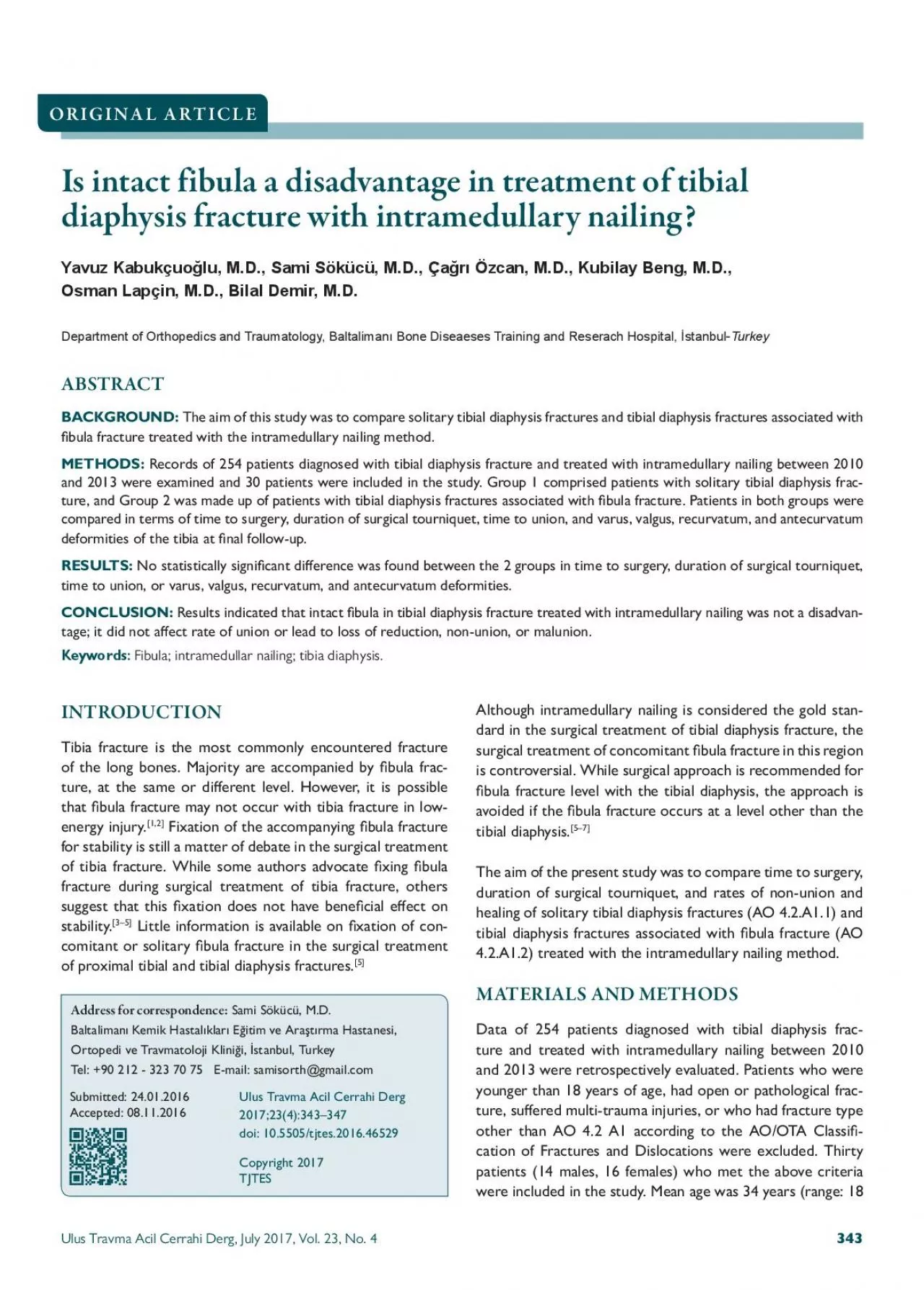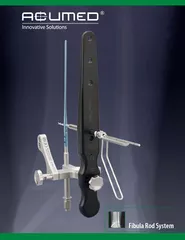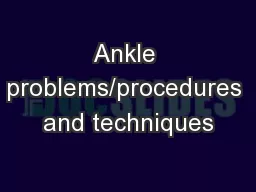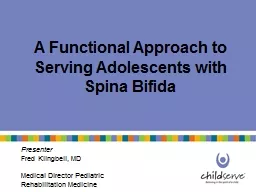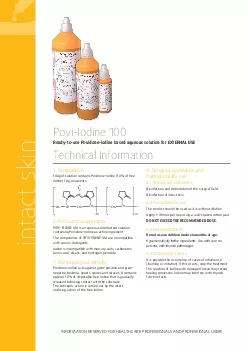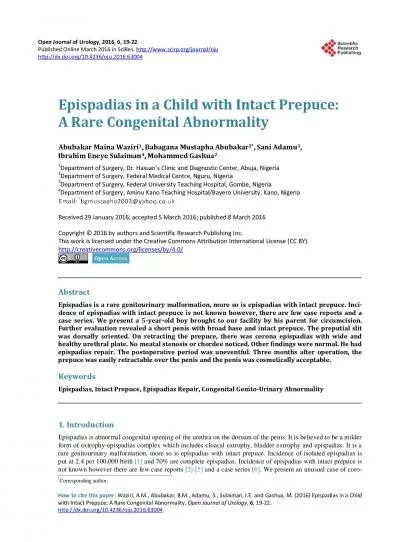PDF-Is intact fibula a disadvantage in treatment of tibialdiaphysis fractu
Author : elyana | Published Date : 2022-09-22
Ulus Travma Acil Cerrahi Derg July 2017 Vol 23 No 4 Address for correspondenceSami Sökücü MDBaltaliman29 Kemik Hastal29klar29 E28itim ve Ara27t29rma HastanesiOrtopedi
Presentation Embed Code
Download Presentation
Download Presentation The PPT/PDF document "Is intact fibula a disadvantage in treat..." is the property of its rightful owner. Permission is granted to download and print the materials on this website for personal, non-commercial use only, and to display it on your personal computer provided you do not modify the materials and that you retain all copyright notices contained in the materials. By downloading content from our website, you accept the terms of this agreement.
Is intact fibula a disadvantage in treatment of tibialdiaphysis fractu: Transcript
Download Rules Of Document
"Is intact fibula a disadvantage in treatment of tibialdiaphysis fractu"The content belongs to its owner. You may download and print it for personal use, without modification, and keep all copyright notices. By downloading, you agree to these terms.
Related Documents

